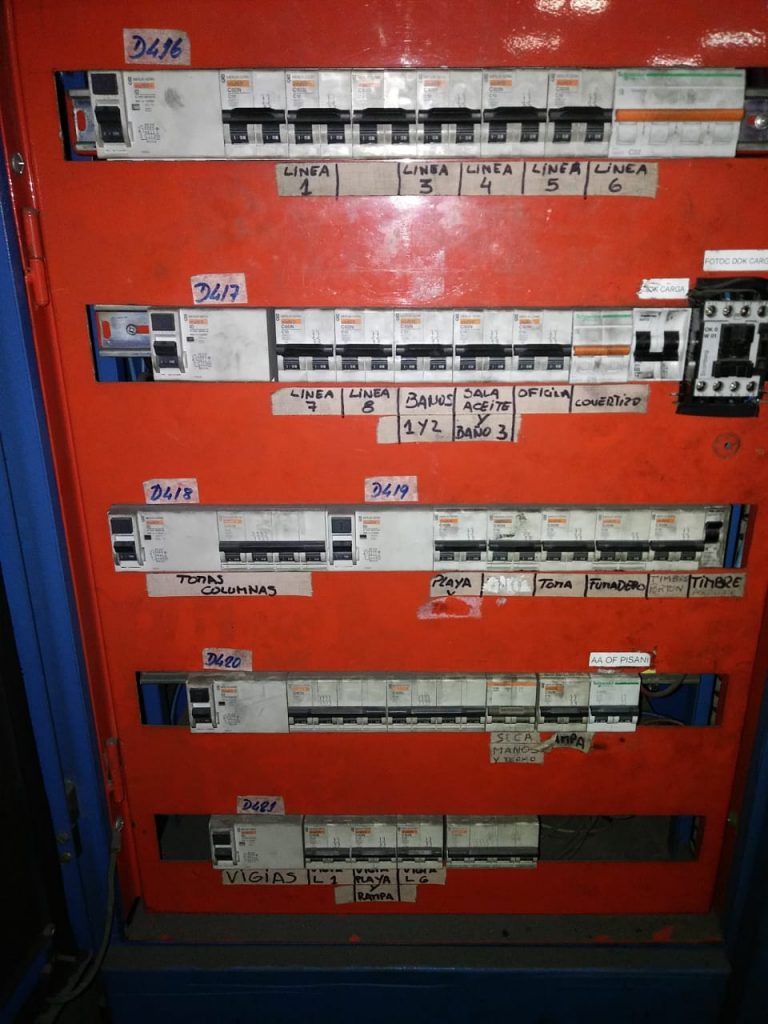It is possible for current to circulate through the human body, through a short circuit or an electric arc. The intensity of the current is measured in (Amper A), Resistance (R), Voltage or potential difference (volt V). In order for the current to circulate, a potential difference is needed. For voltage to exist or current to circulate, a closed circuit and a voltage source are needed. A body is resistant to electrical current when there is a block for the passage of current. When it is totally resistant it is called dielectric.
Effects of electricity on the human body.
When we are part of the circuit, 5 effects on human health can occur.
1. Muscular tetanization: the muscle contracts and relaxes repeatedly in a short period of time causing permanent contraction. 2. Asphyxia: when the current crosses the thorax and produces the Tetanization of the respiratory muscles. 3. Respiratory arrest: the passage of electrical current affects the respiratory nervous center. 4. Ventricular fibrillation: disordered contraction of cardiac cells, which causes the heart to vibrate and prevents it from pumping blood. 5. Burns: the passage of electric current generates heat and depending on the intensity and time can cause serious burns.
2 Types of electrical contact:
Direct contact: It is the one that is produced with the active parts of the installation, which are usually in tension.
Protection against direct contacts.
They can be achieved in three ways:
– Phase + phase – Removal of active parts. – Phase + earth – Interposition of obstacles. – Induction – Coating of active parts.
Indirect contact: It is the result of a fault in a receiver or accessory, deviating the electrical current through the metal parts on these.
Protection against indirect contacts.
– Grounding of the masses. – 24V transformers. – Circuit separation. – Double insulation. – Differential switch.
Up to 24v can be performed without security measures, because the body serves as a resistance so that the current does not pass through it.
Voltage levels:
• Very low voltage (MBT): voltages up to 50v in direct current or equal effective values between phases in alternating current. • Low voltage (BT): voltages above 50v and up to 1000v between direct current or equal effective values between alternating current. • Medium voltage (MV): voltages above 1000v and up to 33,000v inclusive. • High voltage (AT): voltages above 33.000v.
MAIN ELEMENT DETERMINING THE ACCIDENT
1 – Neglect. 2 – Hazardous installations of permanent intake. 3 – Facilities with temporary defects. 4 – Due to another person. 5 – Oblivion of norms or danger. 6 – Ignorance. 7 – Lack of vigilance. 8 – Error. 9 – Other cases. 15% of electrical accidents are fatal.
ACTION IN CASE OF ACCIDENTS
• Cut the current. • Cause a short circuit. • Isolate from the side of the current and from the ground side, separate the victim from the driver. • Begin resuscitation (mouth to mouth and heart massage), ensuring that the time of action is the minimum because the longer it takes to react, less chance of saving the injured person will be.
WORK WITH TENSION:
Contact: used in LV and MV installations, consists of separating the operators from the live and earth parts with isolated elements and tools. At a distance: apply techniques, elements and safety provisions tending to move points away from the operator, using appropriate equipment. A potential: using transmission lines of more than 33kv nominal, is to isolate the operator from ground potential and put it to the same potential of the driver.
In case of fire in electrical installations:
• Class C fires – ELECTRIC -. The letter C of white color, on a blue circle.
Training:
The personnel who carry out the maintenance of the electric installations will be trained by the company for the good performance of their function, informing them about the risks to which they are exposed. You will also receive instructions on how to help an injured person by electric shock, first aid, fight against fire and evacuation of burnt premises. Work with tension will only be executed by qualified personnel. The competent authority of the current regulations is the Argentine Electrotechnical Association.
Five golden rules for electrical work.
1) Effective cutting of all voltage sources.
2) Blocking of cutting devices.
3) Verification of absence of tension.
4) Grounding and short circuit.
5) Signaling of the work area.

